CBC
Thu, October 19, 2023
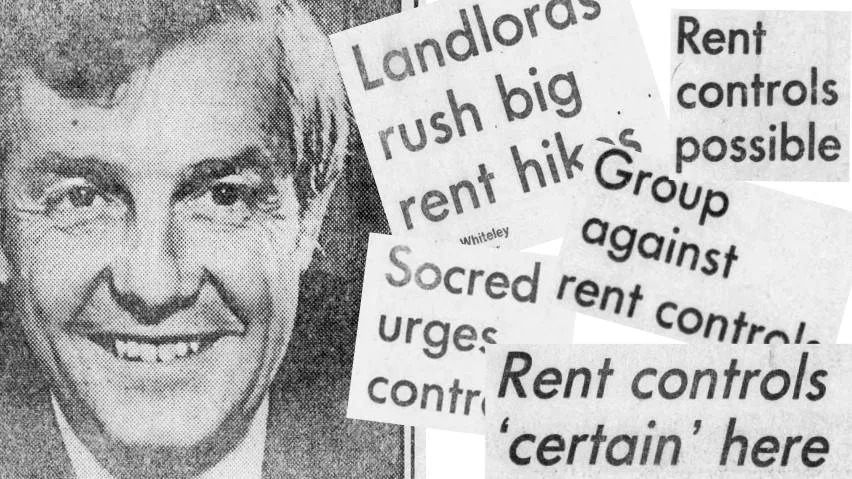
Sky-high inflation. Exorbitant rent increases. Conflict between Alberta and Prime Minister Trudeau.
The year is not 2023.
It's 1975.
Albertans were grappling then, like they are now, with a surging cost of living, high interest rates and a housing crisis.
The Progressive Conservative government of premier Peter Lougheed had just been re-elected in the spring with a commanding majority. That summer, amid growing calls from tenants groups who felt gouged by what they described as frequent and unreasonable price increases from landlords, the PCs were adamant that rent controls were not the solution.
By autumn, they had changed their minds.
In the face of mounting pressure both locally and federally — as prime minister Pierre Trudeau's government prepared its own set of wage and price controls — the Alberta government reluctantly adopted legislation in December 1975 that put an 18-month cap on rent increases in the province: no more than 10 per cent in 1976 and no more than nine per cent in the first six months of 1977. After that, the rent-control law would be phased out.
It was a controversial move. Free-market advocates abhorred the government intervention, while tenants groups felt the rules were too lenient. Enforcement was also a challenge, with numerous cases ending up in court.
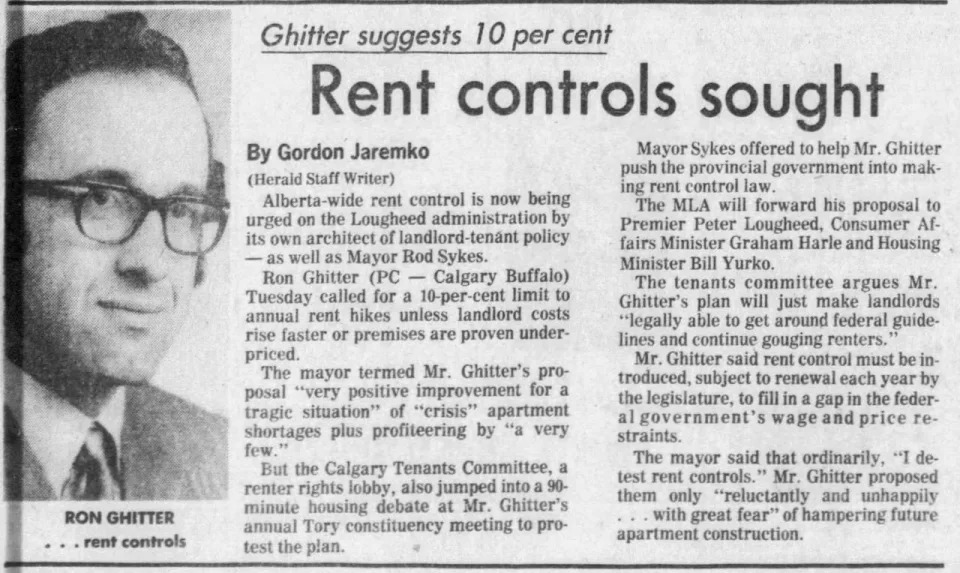
A Calgary Herald article from Oct. 22, 1975, in which Calgary-Buffalo PC MLA Ron Ghitter discusses 'reluctantly and unhappily' calling for rent control in Alberta. (Newspapers.com/Screenshot)
Today, Ron Ghitter looks back at the rent control legislation as an extraordinary measure at an extraordinary time. He was the PC MLA for Calgary-Buffalo and one of the architects of Alberta's landlord-tenant policy of the 1970s. And while he sees many parallels from that era to today, he doesn't believe a return to rent control is the right way to tackle the current housing crisis.
"I would be opposed to it personally," he said in an interview. "The problems that we've got are much deeper than what rent controls will solve."
Alberta's current United Conservative government has also rejected recent calls for rent control in the province.
So how did the government of 1975 come to adopt the policy, albeit reluctantly?
A combination of factors coalesced at the time, some of which may sound familiar to Albertans today, while others may seem quite foreign. And rent control wasn't the only measure the provincial government took in response to the housing crisis of the era. Additional policies included a temporary ban on apartment-to-condo conversions and a renters' tax credit. Those worked in concert with long-since-expired federal policies aimed at encouraging the construction of more rental housing.
Opinions then, like today, differed on which policies would provide the best solutions. In retrospect, there is still disagreement. But the experiences from nearly half a century ago still hold relevance — and may offer some lessons — when it comes to the housing crisis facing so many people today.
What's old is new again — sort of
On the surface, the parallels between the mid-1970s and today seem numerous.
Economically, both eras saw high levels of global inflation, high interest rates, rapid population growth in Alberta and rapidly surging rents — especially in Calgary.
Politically, both eras saw a conservative government in Alberta that was often at odds with a Liberal government in Ottawa — led by a prime minister named Trudeau.
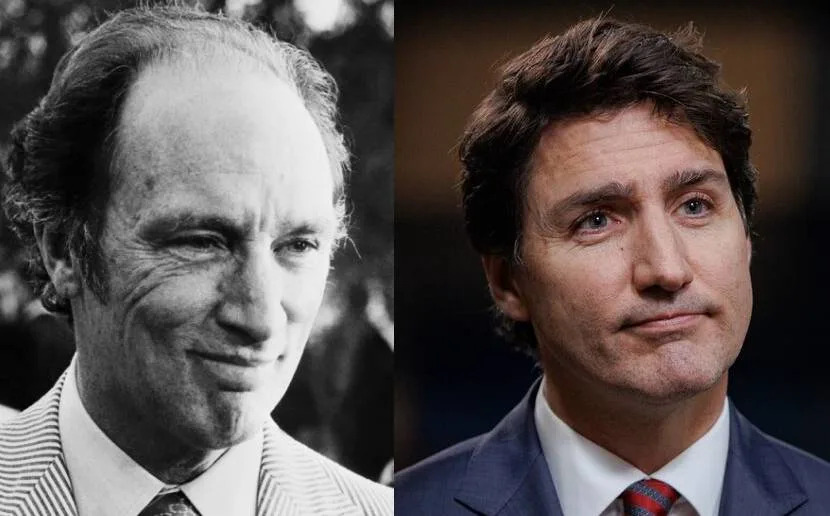
Pierre Trudeau, left, was prime minister in 1975. His son, Justin Trudeau, is prime minister in 2023. (AFP/Getty Images, Evan Mitsui/CBC)
Both eras also saw the Alberta NDP calling for more government action on affordable housing, led then by Grant Notley and today by his daughter, Rachel Notley.
Then, a group calling itself the Calgary Tenants' Committee circulated a rent-control petition that had amassed 12,000 signatures by November 1975. Among the signatories were two Calgary aldermen (although both said they didn't fully support the petition's demands.)
Today, there have been also been calls for rent control, including public rallies and an online petition that has collected 6,000 electronic signatories. One city councillor in Calgary has also directly called on the province to institute a rent cap.
At first, the PC government of the 1970s came out against the idea, saying rent control would inhibit the construction of new rental housing, disincentivize maintenance on existing rental properties and ultimately harm the lower-income tenants it aimed to protect.
"The record in other parts of Canada and elsewhere indicates that such tenants in the long term suffer greater indignities when rents are controlled," Alberta's consumer affairs minister, Graham Harle, was quoted as saying in a July 1975 newspaper article.
Nearly a half-century later, Community and Social Services Minister Jason Nixon made much the same argument.

At left, Graham Harle, who served as Alberta's consumer affairs minister in 1975. At right, Jason Nixon, the province's current minister of community and social services. (Newspapers.com, Alberta.ca)
"I don't want to see more good, hard-working people become homeless," he told the Calgary Sun in August 2023. "That's what rent control in the end will do. It will create less space for people to be able to live."
The current Alberta government has so far stuck to its position.
So why did the Alberta government of 1975 end up backtracking?
Then vs. now
One difference between then and now has been the target of public ire over the housing crisis.
Today, much of the attention in Calgary has been focused on the municipal government, especially as it debated a contentious new affordable housing policy earlier this year. Federally, the opposition have also made housing a key point of attack on the Liberal government.
Meanwhile, the Alberta government has not faced the same level of political pressure.
Opposition NDP Leader Rachel Notley has stopped short of calling for rent control directly, instead saying it should be one of a host of options that ought to be considered.
Back in 1975, by contrast, the opposition Social Credit party had been calling for rent control specifically and, when the PCs finally introduced it, NDP Leader Grant Notley criticized the legislation as not going far enough.
"There was great pressure on us as a government to do something about rent," Ghitter recalled of the era.
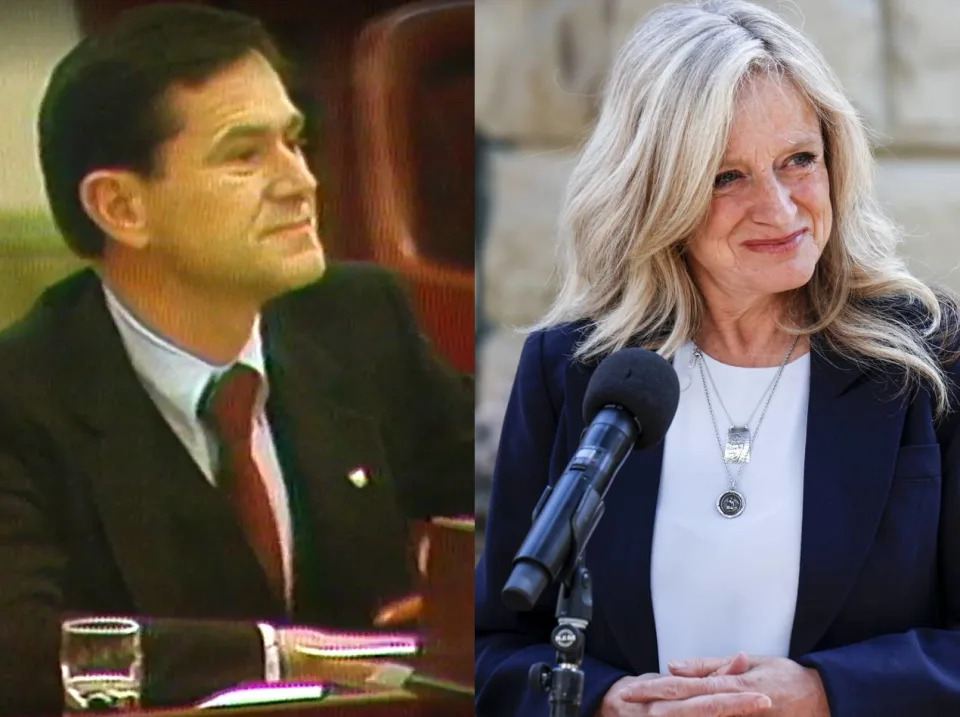
Grant Notley, left, led the Alberta NDP in 1975. His daughter, Rachel Notley, leads the Alberta NDP in 2023. (CBC Archives, Jeff McIntosh/The Canadian Press)
Adding to the local pressure was a situation in federal politics that had not been seen since wartime and has never been seen again since. To deal with spiralling inflation in 1975, Ottawa brought forward a broad set of wage and price controls — a staggering degree of government intervention that was ultimately tested (and approved) by the Supreme Court.
Landlord-tenant relations, as a provincial responsibility, were outside Ottawa's direct purview but the federal government exerted pressure on provincial premiers to go along with the national plan when it came to housing costs.
In the end, Lougheed — sometimes known as "Peter the Pink" by more hard-line conservatives — agreed with the feds, but on the condition that agricultural and energy products would be exempted from federal price controls. Also, Alberta's rent control would be phased out after 18 months instead of the the three-year period Ottawa had been asking for.
The Alberta premier struck a conciliatory tone in announcing the about-face on rent control, saying the province needed to join the national effort to break the cycle — and psychology — of inflation.
"I agree with the prime minister's statement that Canadians are developing a significant fear of of inflation and are trying to overcompensate for the most severe inflation they can imagine," Lougheed said during the opening of the provincial legislature in November 1975.
"This attitude must be checked, and for this reason Alberta will work with the federal government."
Similar measures would be harder to imagine in today's political climate.
The federal wage controls were sweeping in their scope and scale, and nothing remotely close has been proposed by the current Liberal government in response to the modern inflation situation.
And Alberta Premier Danielle Smith, to date, has also been less willing than Lougheed to find common ground with the current Trudeau government on a host of issues — especially those involving federal overlap into provincial jurisdiction.
How it worked out
Opponents of rent control feared Lougheed would break the 18-month promise, but his government indeed began to unwind its policy in June 1977.
It took a phased approach and, by June 1980, all units that had been subject to rent control in Alberta were decontrolled.
In 1982, the Canada Mortgage and Housing Corporation commissioned a report into the Alberta government's dalliance with rental-market regulation.
It found the province's policy had largely managed to achieve the goal of mitigating the housing crisis in the short term without stifling the construction of new rental housing in the longer term — which was a primary concern among rent-control opponents. It credited the short duration of the policy and nuances in the regulation that allowed landlords to pass on some additional costs to tenants in exceptional circumstances.
"These two aspects of the program served to alleviate any negative impacts on the rental housing market," the report reads. "New housing starts do not appear to have slowed due to rent control by itself."
The CMHC report also praised the decision to phase out the rent controls over time rather than having them end abruptly.
"The decontrol scheme did serve to soften and spread out the increases that would have taken place had the controls been lifted with no thought to the resultant increases that might occur," it reads.
Another key aspect of the legislation was the prohibition on the conversion of rental apartments to condominiums for sale, which the report found was effective and "made any transfers out of the rental market negligible."
There was also another provincial policy that helped ease the burden on renters during that era.
Renters tax credit
Flip through newspaper archives from the 1970s and, scattered among the many articles, opinion columns and letters to the editor debating the pros and cons of rent control, you'll find advertisements from the Alberta government promoting its "renter assistance credit."
This was a benefit individuals could claim on their income taxes and was available to most people who paid rent. The value of the benefit was on a sliding scale: the amount of money you could receive diminished with your household income.
Today's rent assistance, by contrast, must be applied for separately and is aimed at low-income people living in subsidized units provided by housing management bodies.
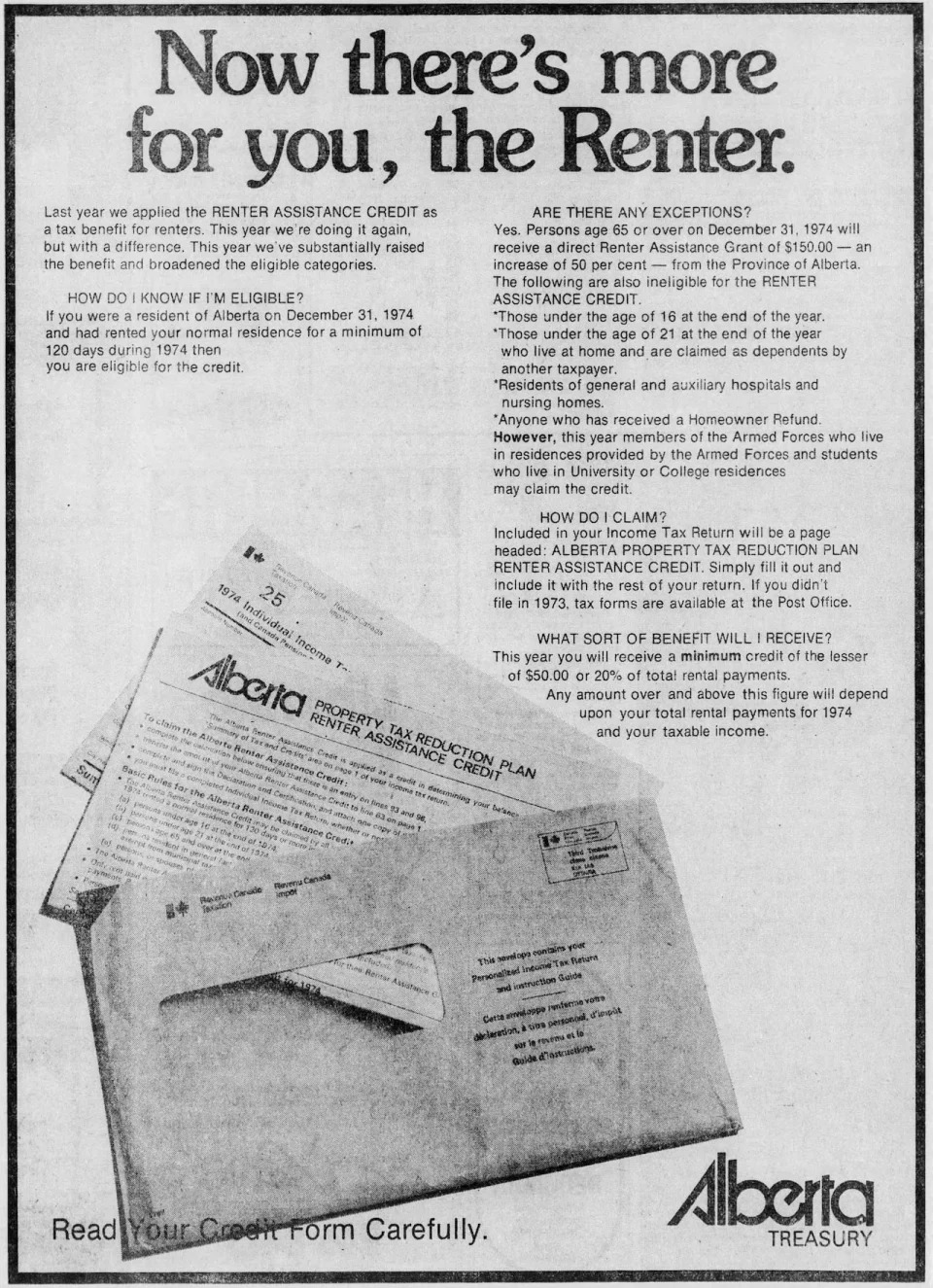
A newspaper ad from 1975 promoting the Alberta government's renter assistance credit, which was a benefit claimed on individuals' income taxes. (Newspapers.com)
Alberta kept the renters tax credit even after ending rent control, and even boosted it. By 1983, it was worth up to a maximum of $500 annually minus one per cent of a household's taxable income.
The province cancelled the renters tax credit in its 1987 budget, amid a host of austerity measures brought in after a crash in oil-and-gas royalties. By that time, the rental market had completely changed as well, and provincial treasurer Dick Johnston defended the decision, noting "the vacancy rate across most of Alberta is, in fact, at the highest levels ever."
Today, you can still find tax credits aimed at renters in other provinces. Ontario's Trillium Benefit and Manitoba's Residential Renters Tax Credit, for example, both offer modest benefits to low-to-moderate-income tenants.
British Columbia also introduced a new renter's tax credit in its 2023 budget. Lower-income tenants in that province will be able to claim up to $400 in benefits when they file their income taxes in 2024.
Tim Richter, president and CEO of the Canadian Alliance to End Homelessness, says these types of benefits administered through the tax system are an easier and more efficient way for tenants living in precarious rental situations to get financial support, compared to government programs that require a separate application process.
But he also noted that Ontario, Manitoba and B.C. each have some form of rent control today, too.
He cautioned that the hypothetical return of a renters tax credit in Alberta could have unintended consequences and end up benefiting landlords more than tenants.
"Alberta doesn't have rent control," Richter said. "I would be worried about a very large-scale subsidy of consumers being captured by landlords who now realize that, 'Everybody is going to get a subsidy of X per cent, so I'm just going to raise my rent by X per cent.'"
Lessons from the past?
In retrospect, Ghitter said the rent controls his government adopted nearly a half-century ago were ultimately "a negative force, economically" and shouldn't be repeated because he believes they would slow the construction of new rental housing.
"What you need to do, really, is you need to have programs that will create more affordable housing," Ghitter said.
One 1970s-era policy he would like to see resurrected is the Multiple Unit Residential Buildings (MURB) provision to the federal Income Tax Act, which allowed investors to claim depreciation and some other costs of building rental apartments against unrelated income.
"It invited investors — net worth people, doctors, lawyers, whatever — to invest in construction of multi-family housing," Ghitter said. "And it was a tax advantage to them. The investor could write that off immediately and they were hopeful that the housing would bring them some benefits."
The CMHC also commissioned a study into the MURB program in 1981, which found the policy to be "an important component of the recovery in rental construction in the mid to late 1970s."
"However, it appears likely that, if left to its own devices, the rental market would have begun to respond to the excess demand on its own — albeit at higher rents."
The report adds: "The main beneficiaries of the MURB provision from the supply side of the market have been the developer/promoters and investors with high marginal tax rates."
In a recent briefing note from the CMHC to Housing Minister Sean Fraser (obtained by CBC News under access-to-information laws), the MURB policy was credited with encouraging the construction of about 195,000 units at a cost of $2.4 billion in forgone taxes.
"Since the elimination of the MURB program in 1982, tax policy in relation to rental housing development has remained largely unchanged and current tax regulations are less favourable to rental investment than have been historically," the briefing note said.
Richter, with the Canadian Alliance to End Homelessness, believes the MURB program was an effective tool. After it ended, he said, "you saw the construction of rental housing drop off and investors getting more into things like condominiums, which … obviously had a better return."
"So tax incentives are a really, really powerful incentive," he said.
Ghitter believes the key challenge with today's housing crisis is a lack of supply. He believes the role of government should be to encourage the construction of new rental housing, rather than to restrict the price of rent. Over the long haul, he believes that will bring the most relief to people struggling to afford their housing.
Richter agrees a permanent solution is needed but also says people struggling to pay rent right now need immediate supports.
"You want to provide relief to people in the short term, for sure," he said. "But in the long term, you know, you've got to build the housing supply and you've got to have a housing supply that matches with the growth of the province, or else you'll just have people permanently struggling to pay rent, right?"
No comments:
Post a Comment